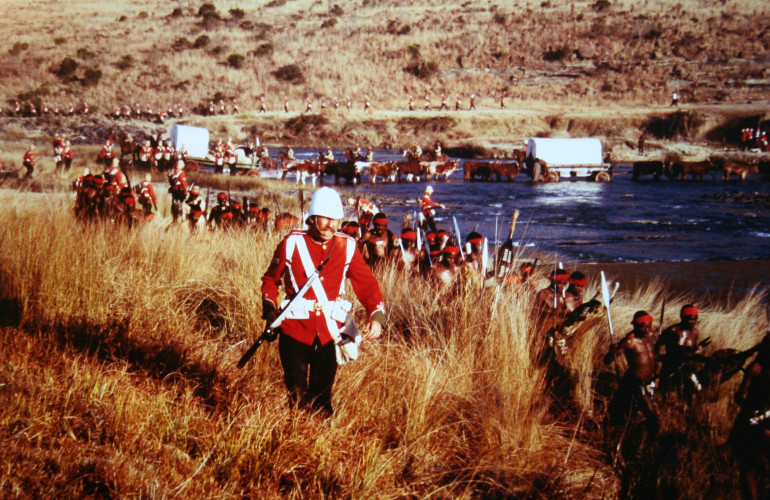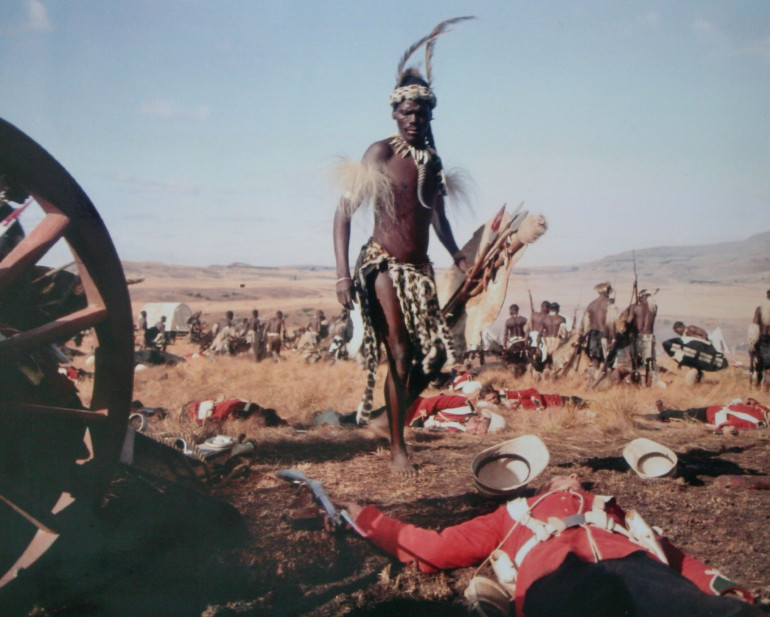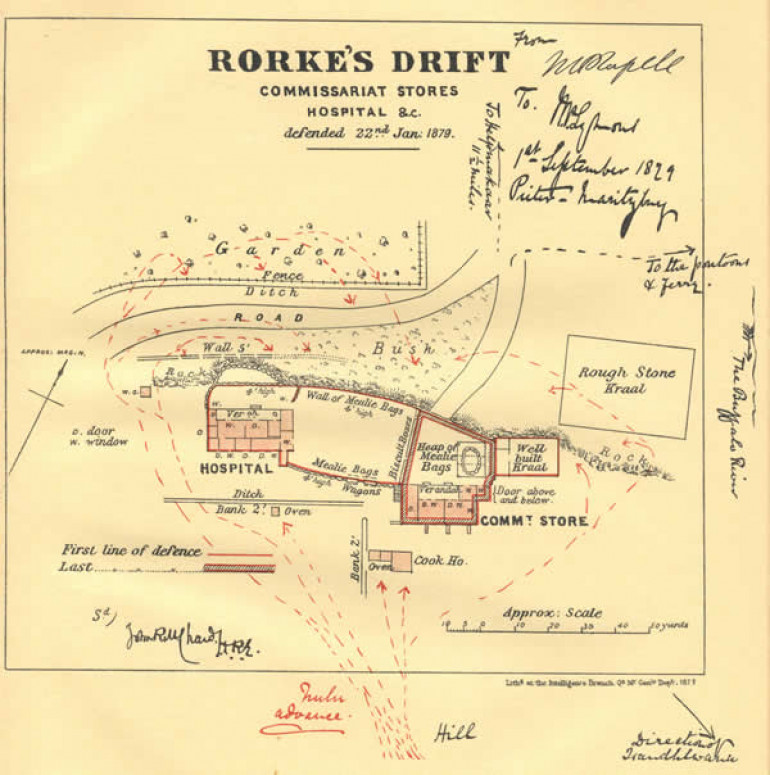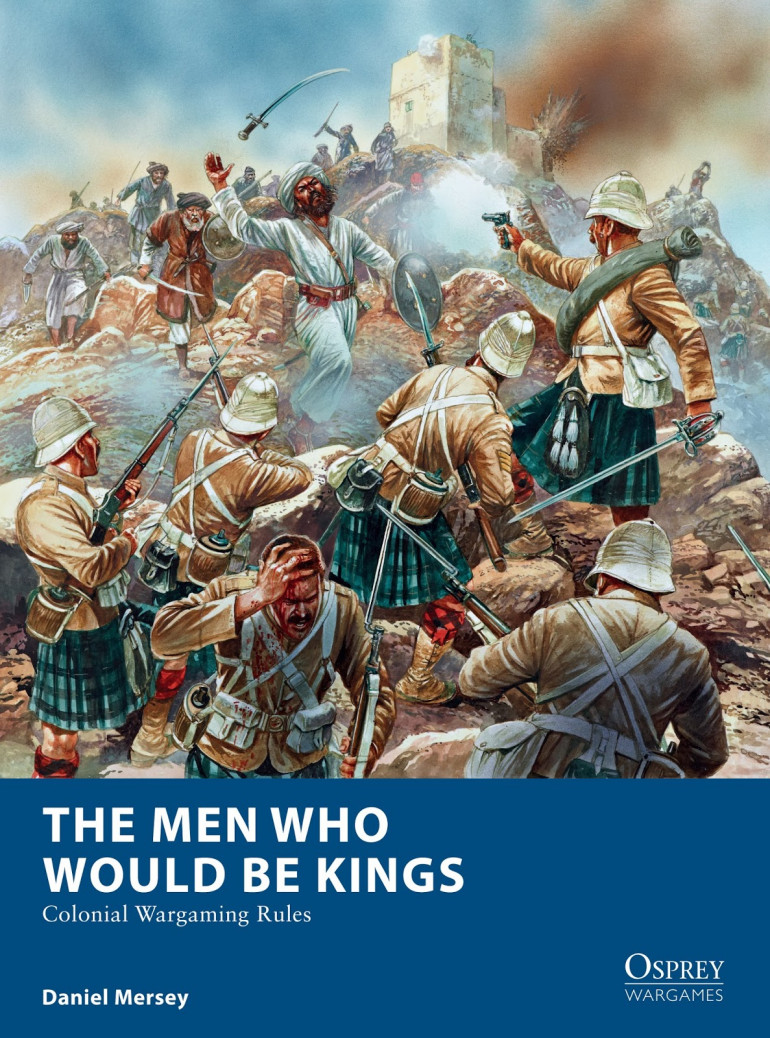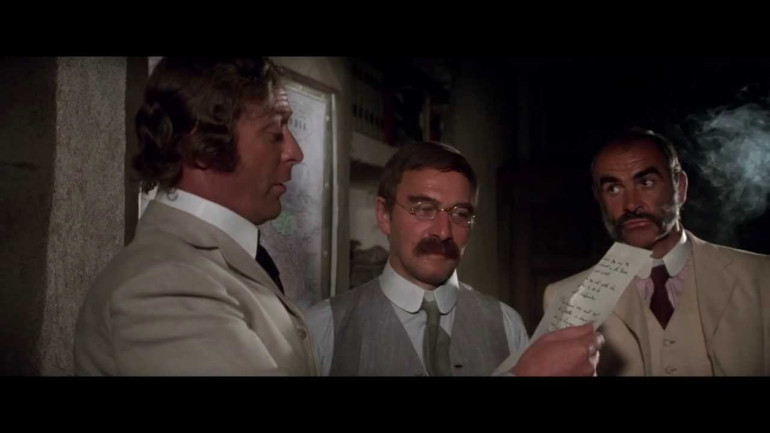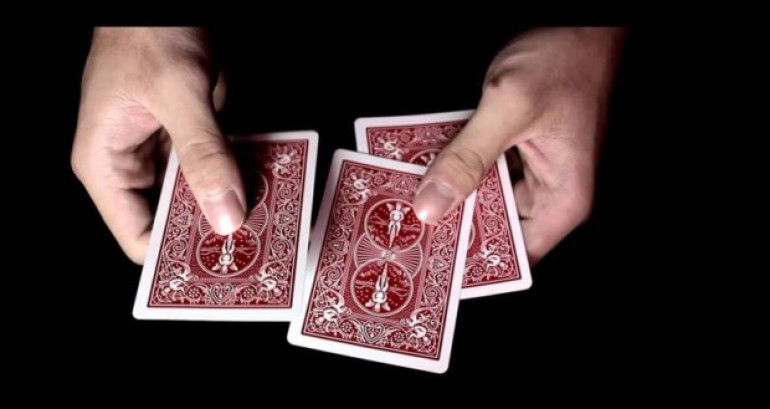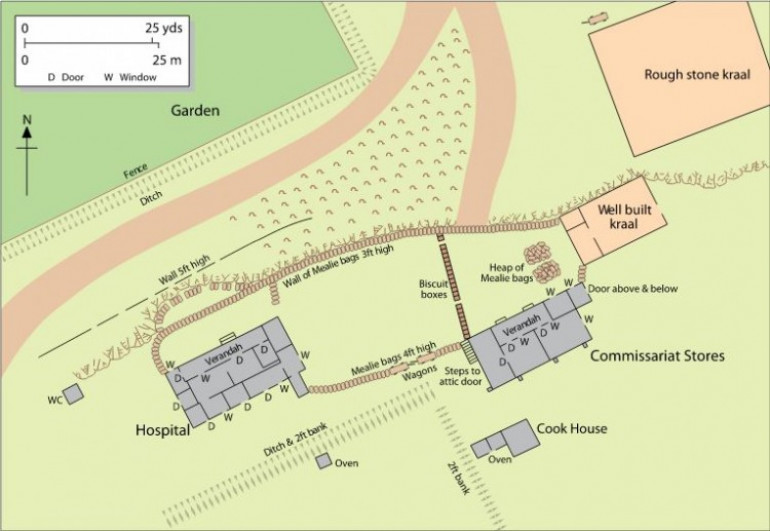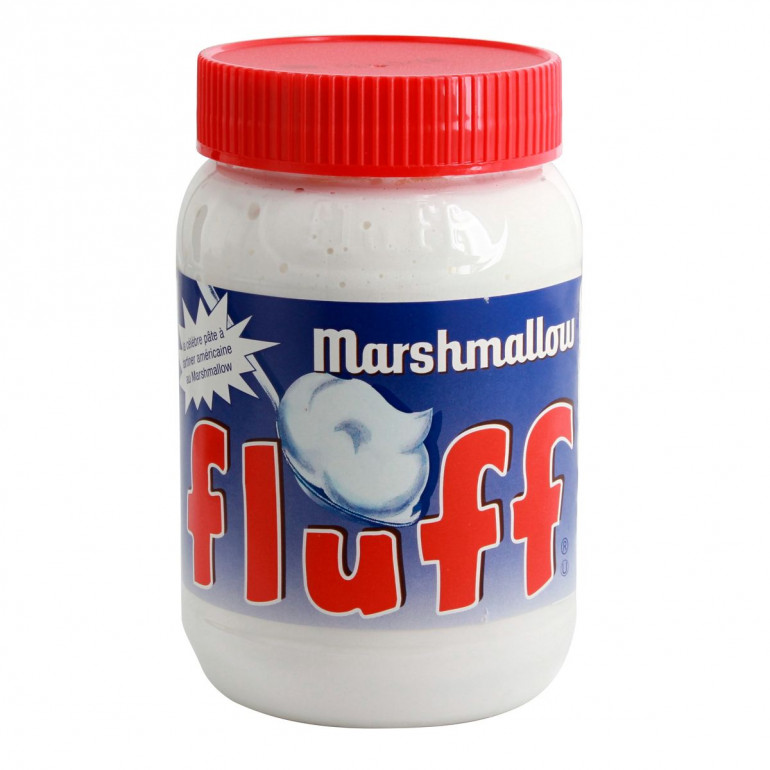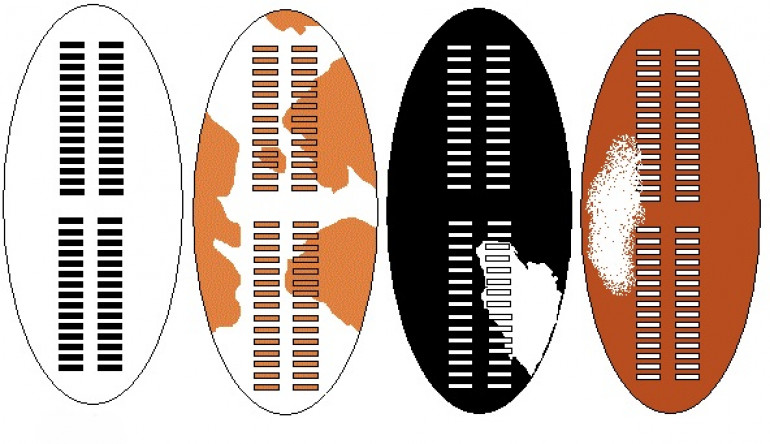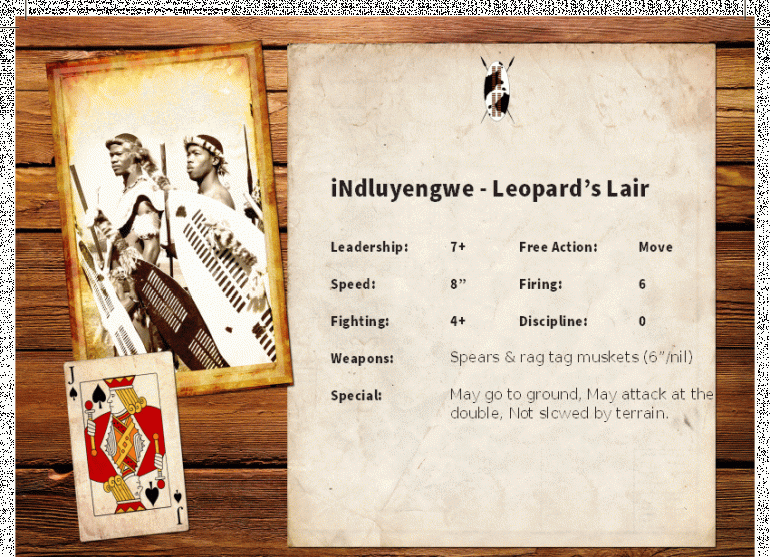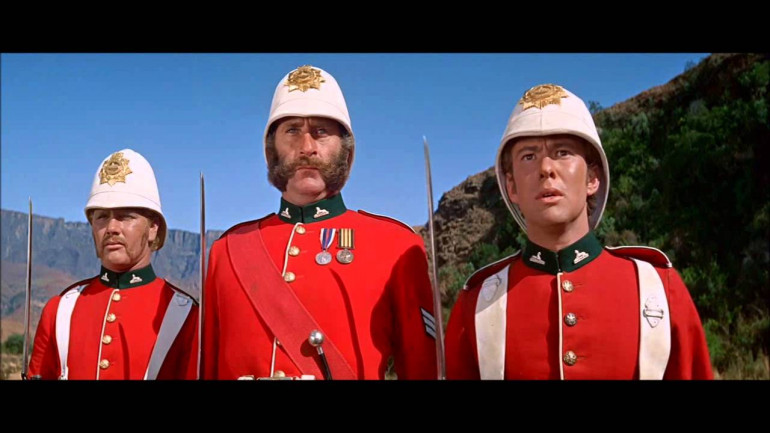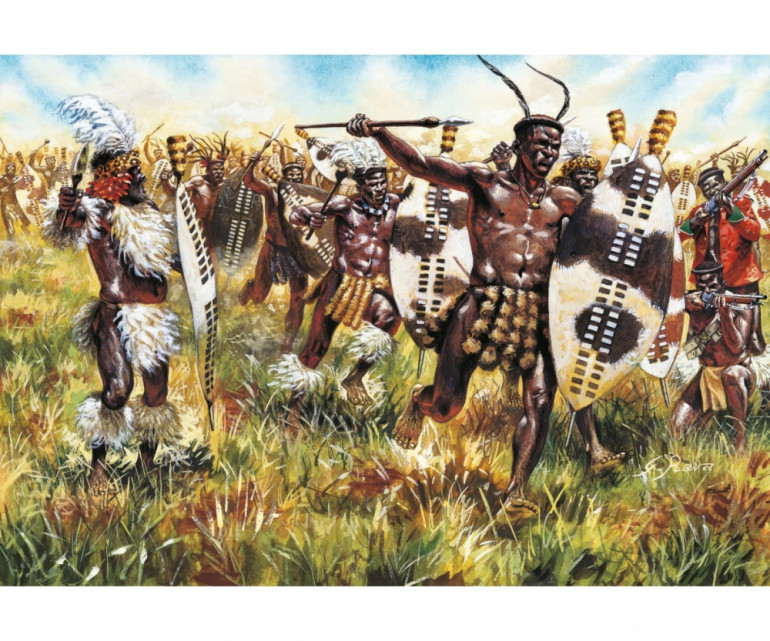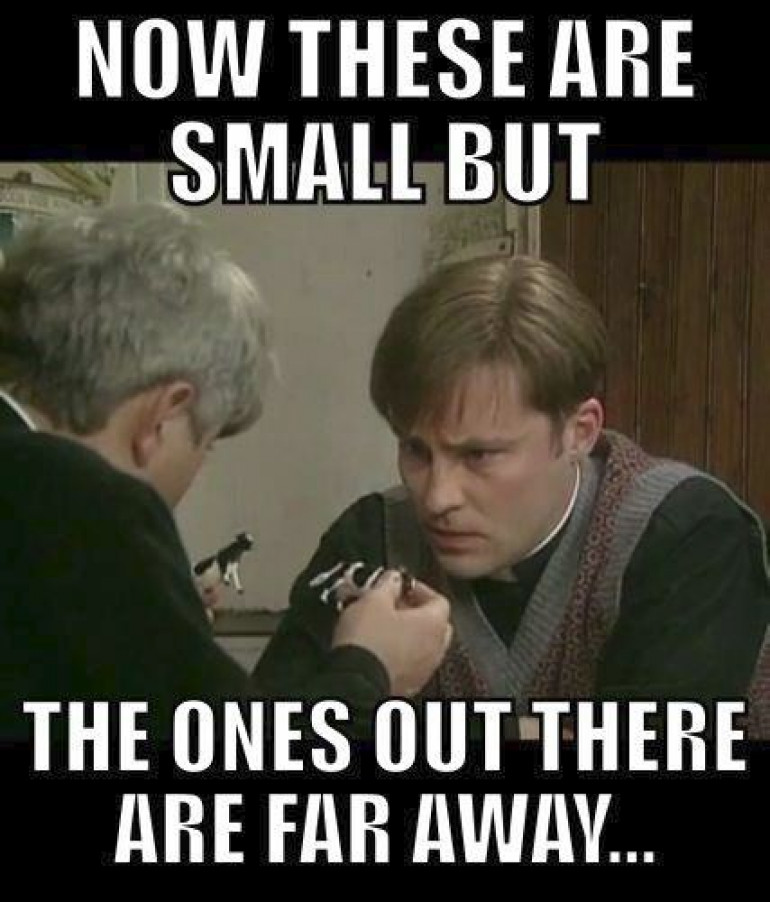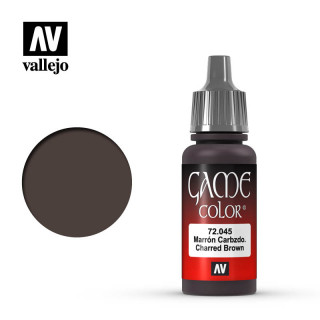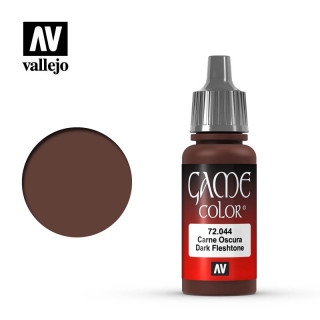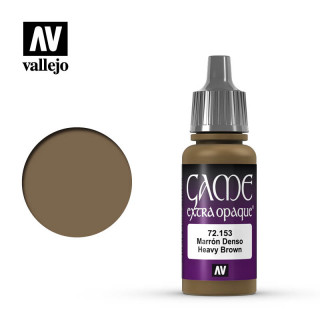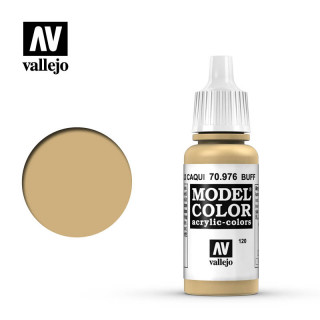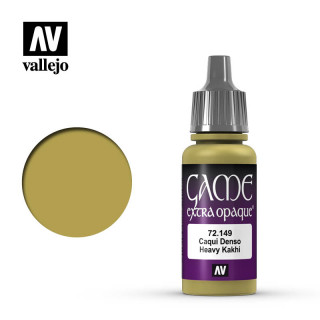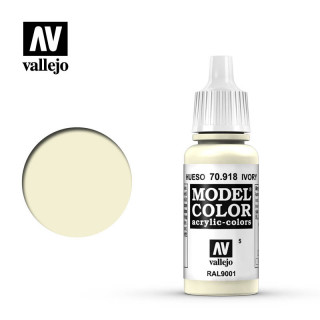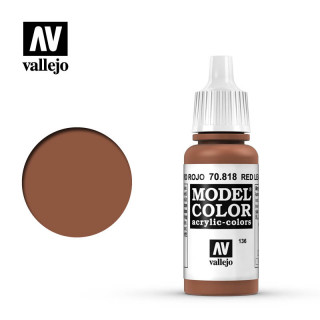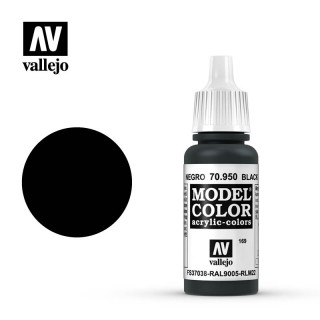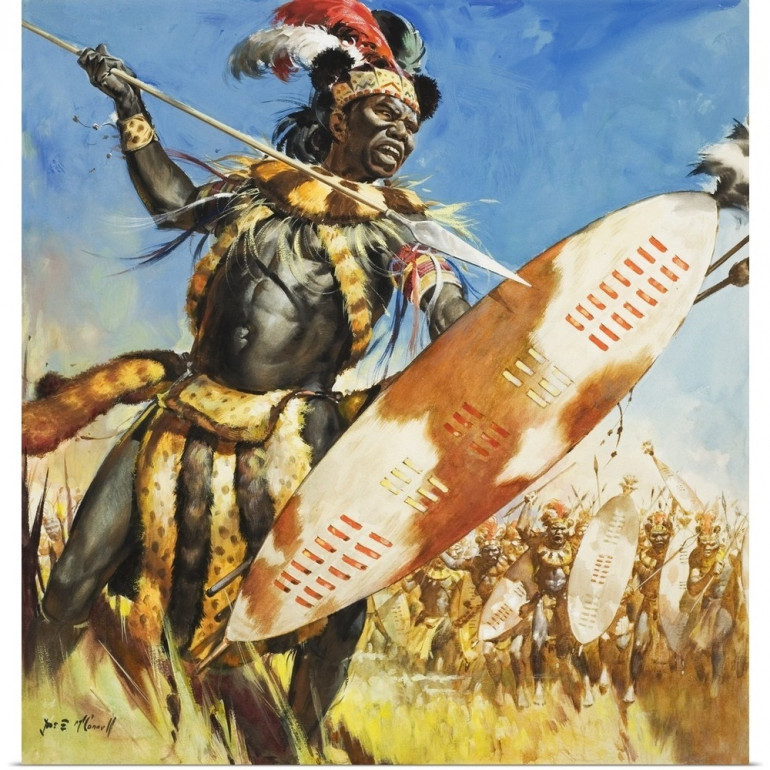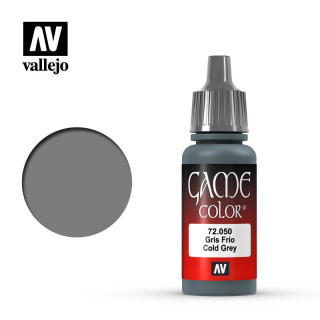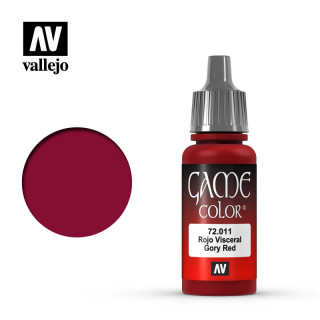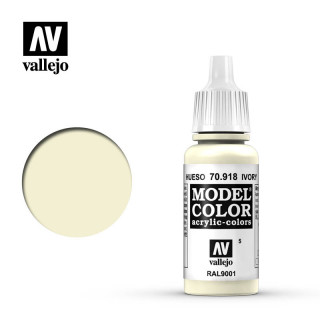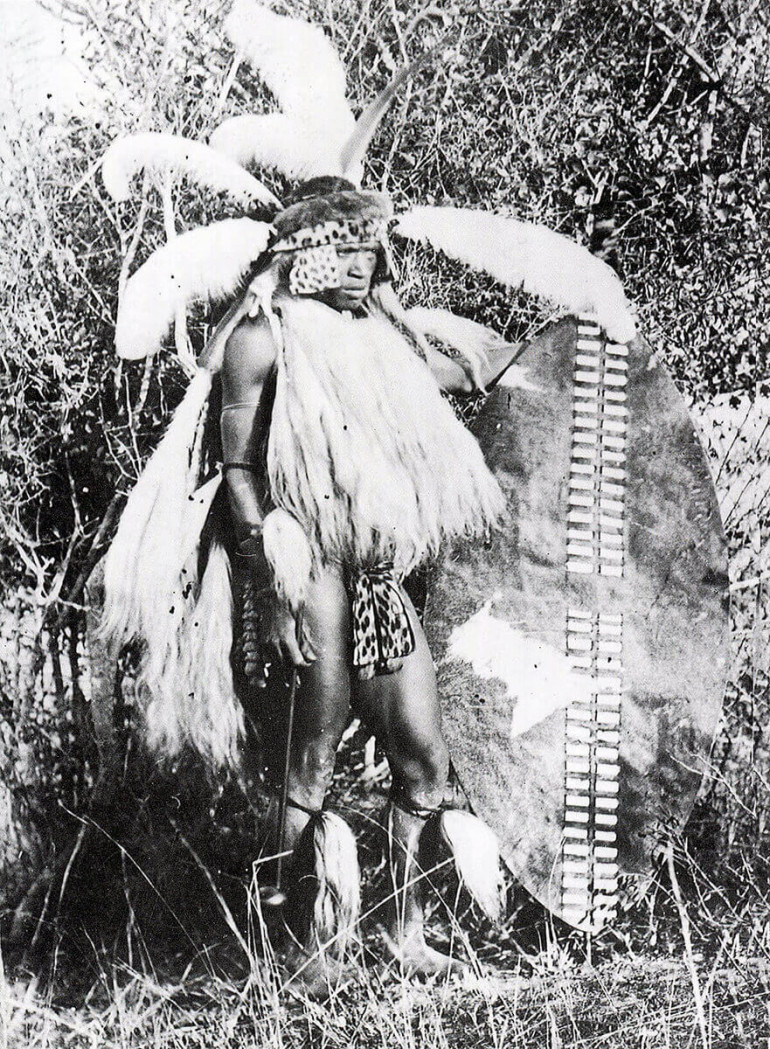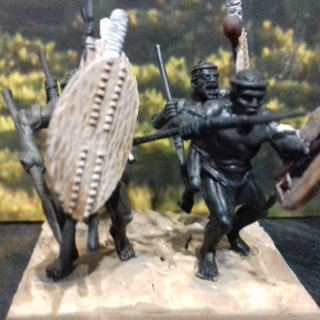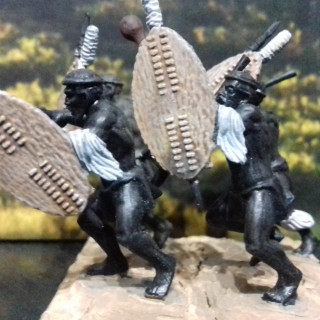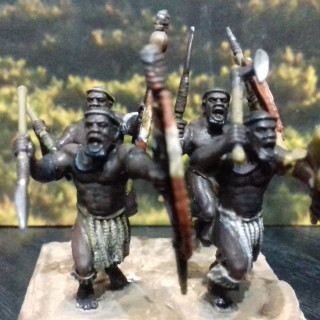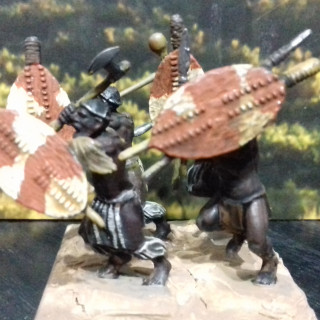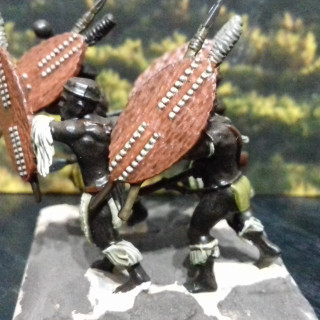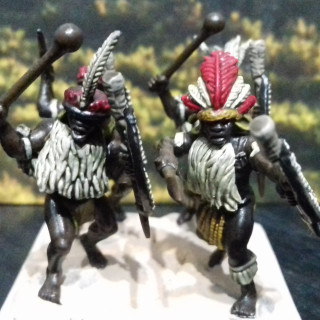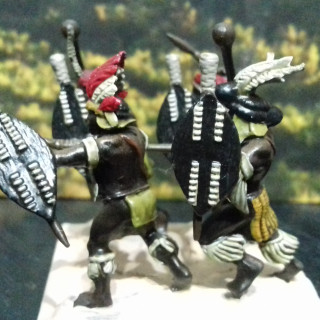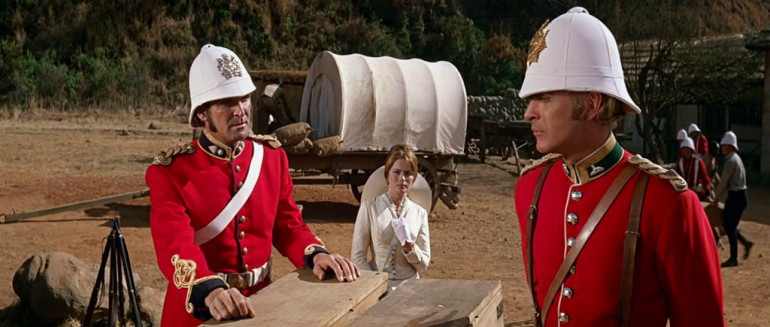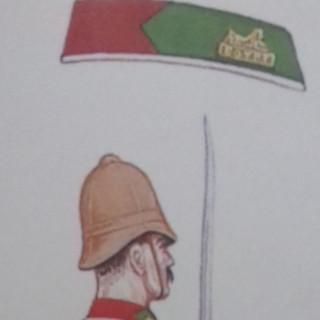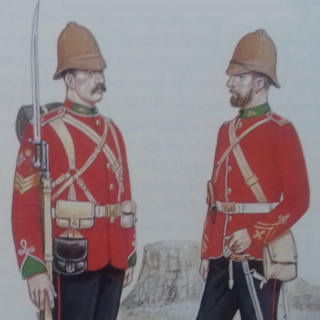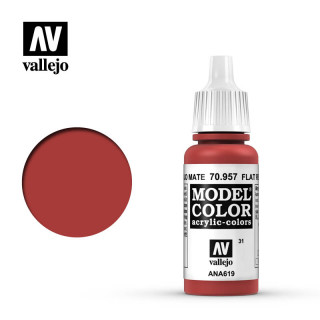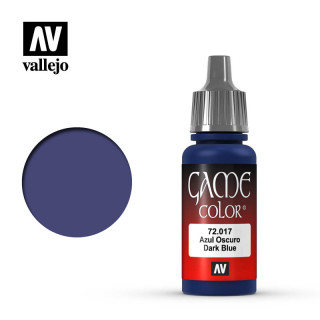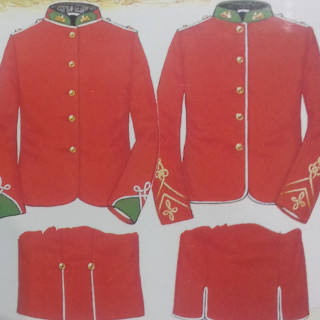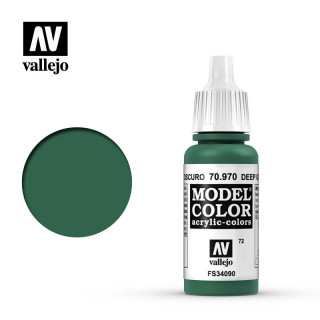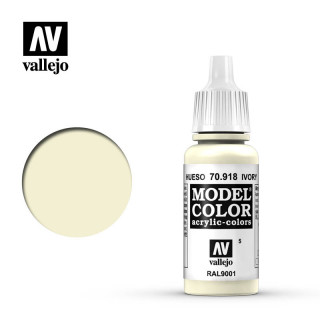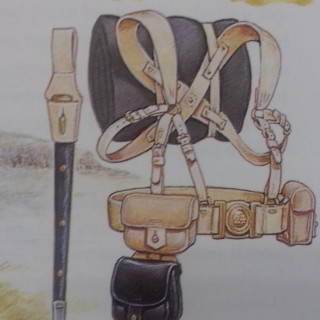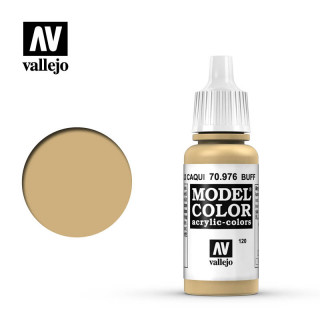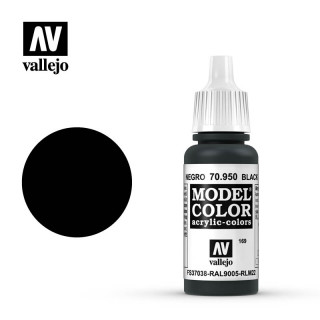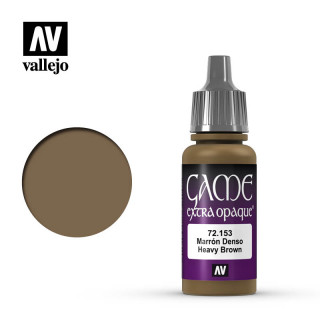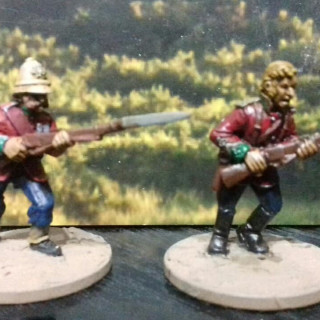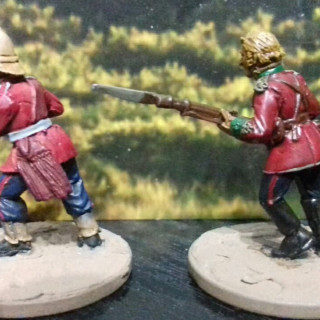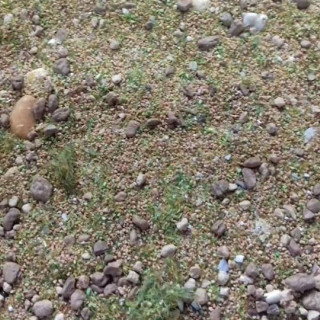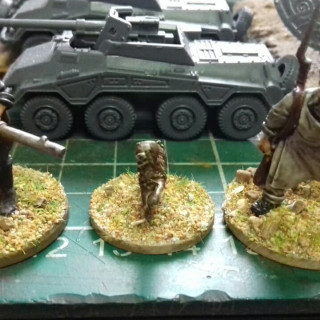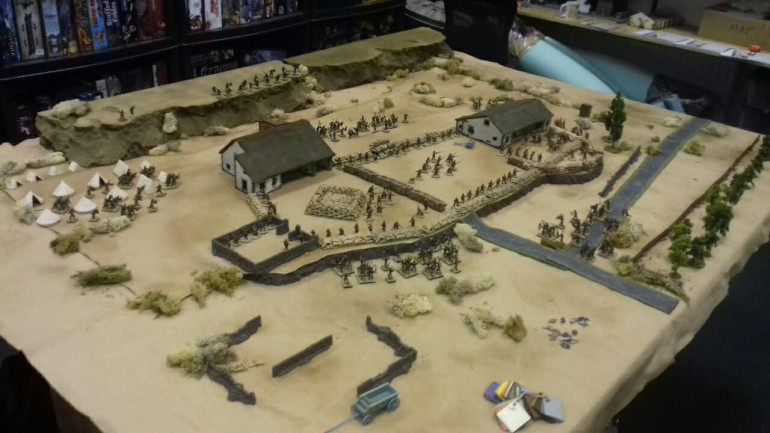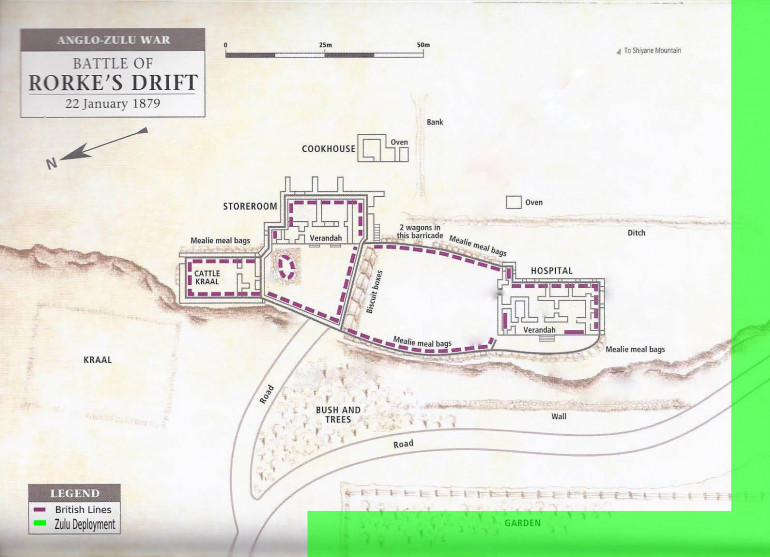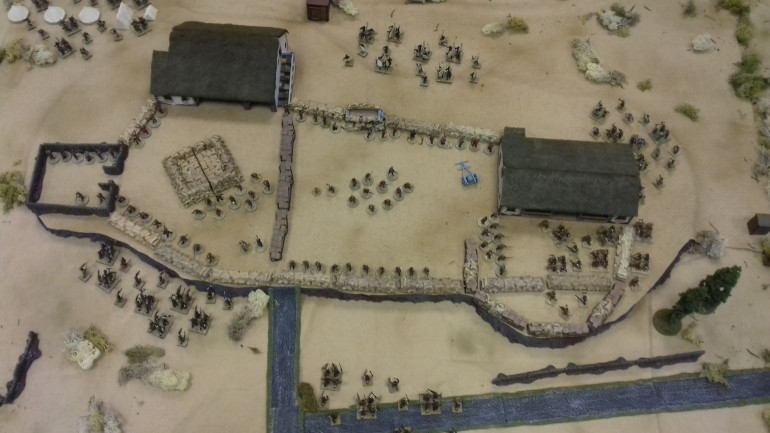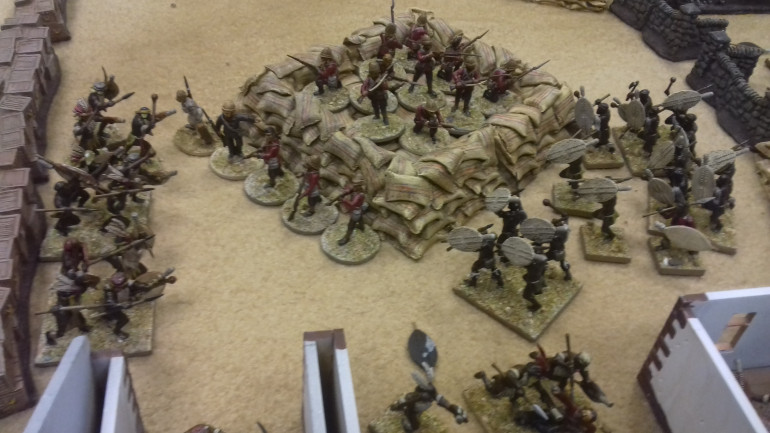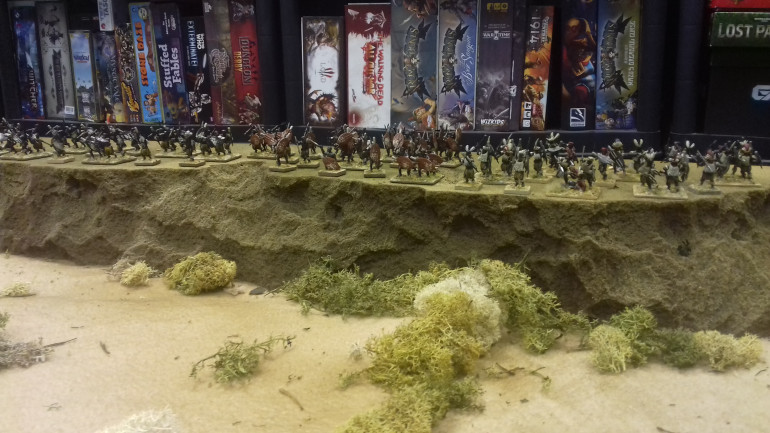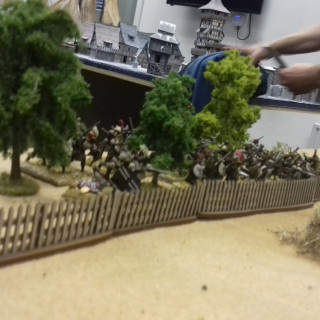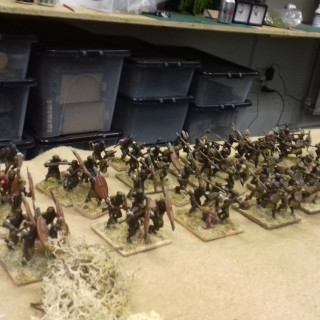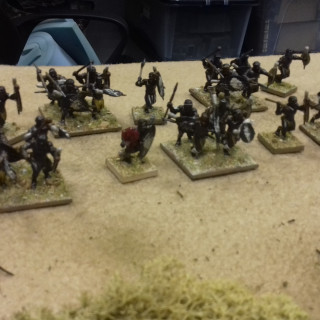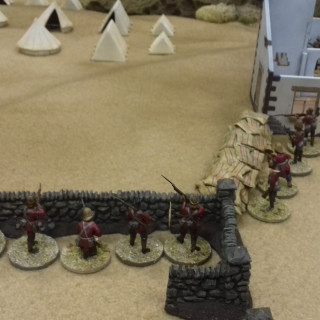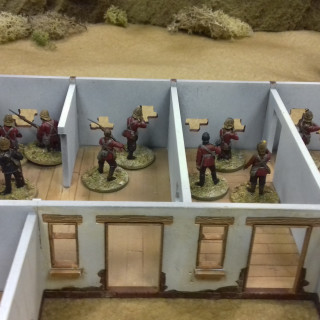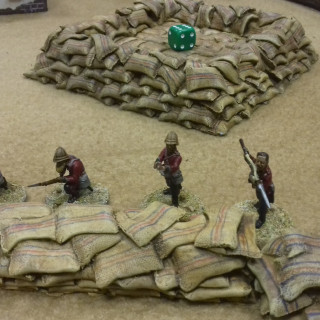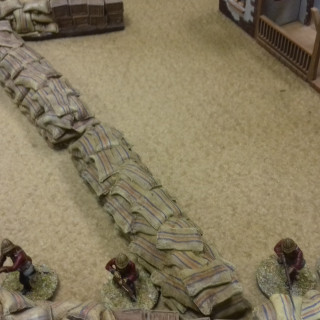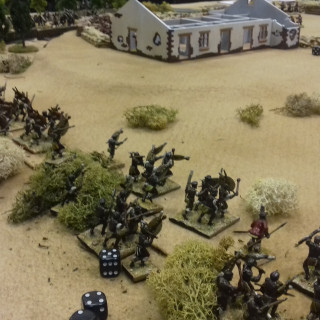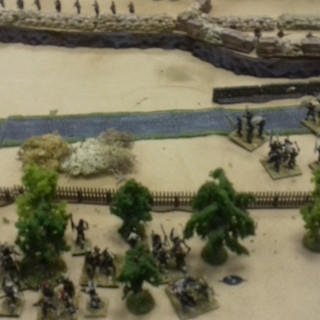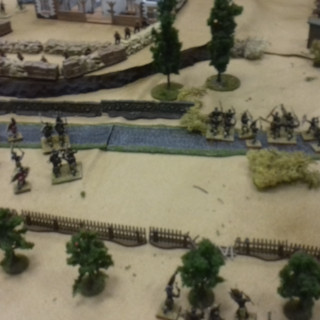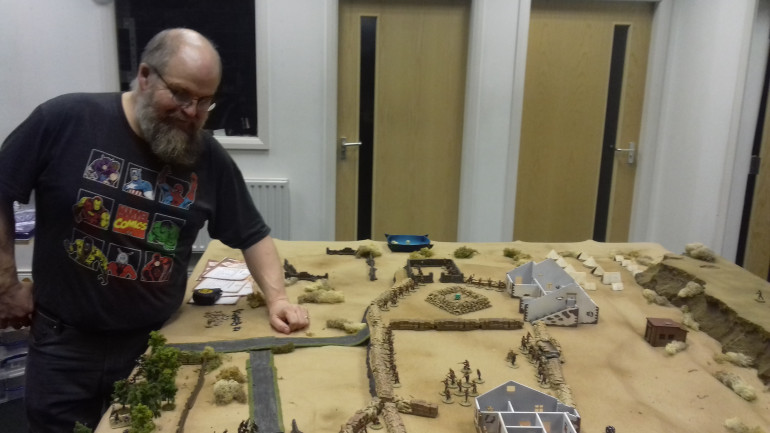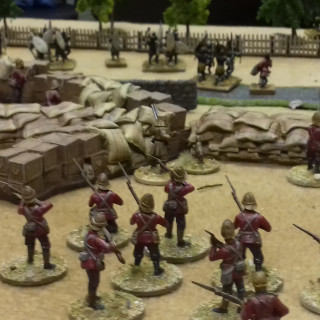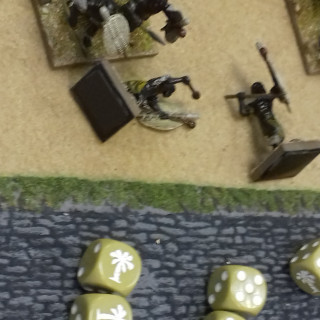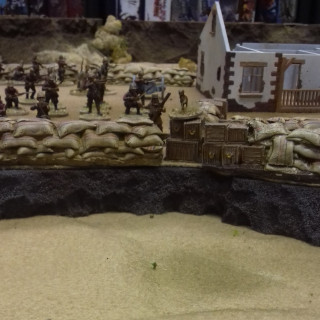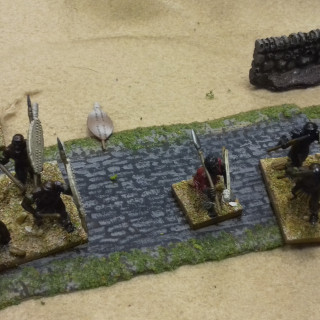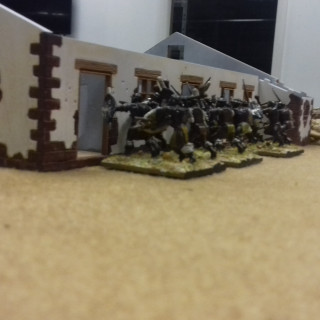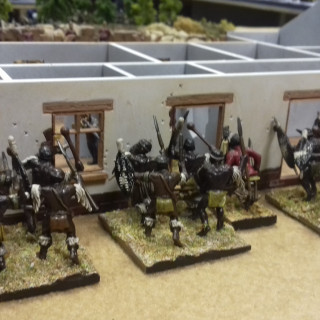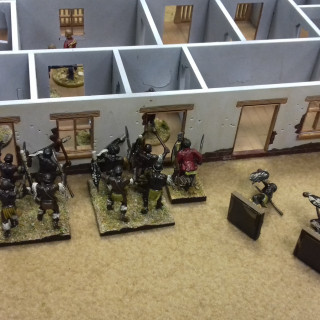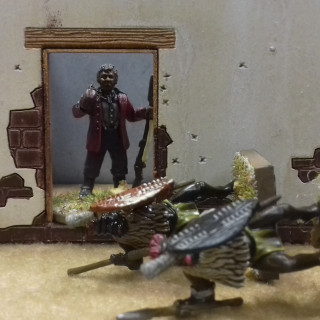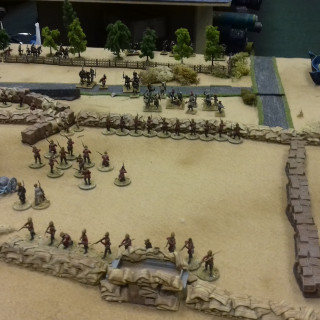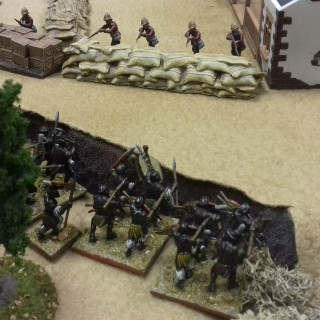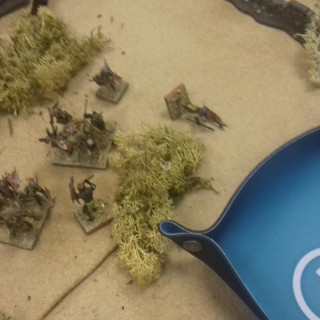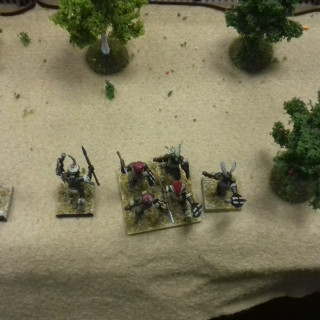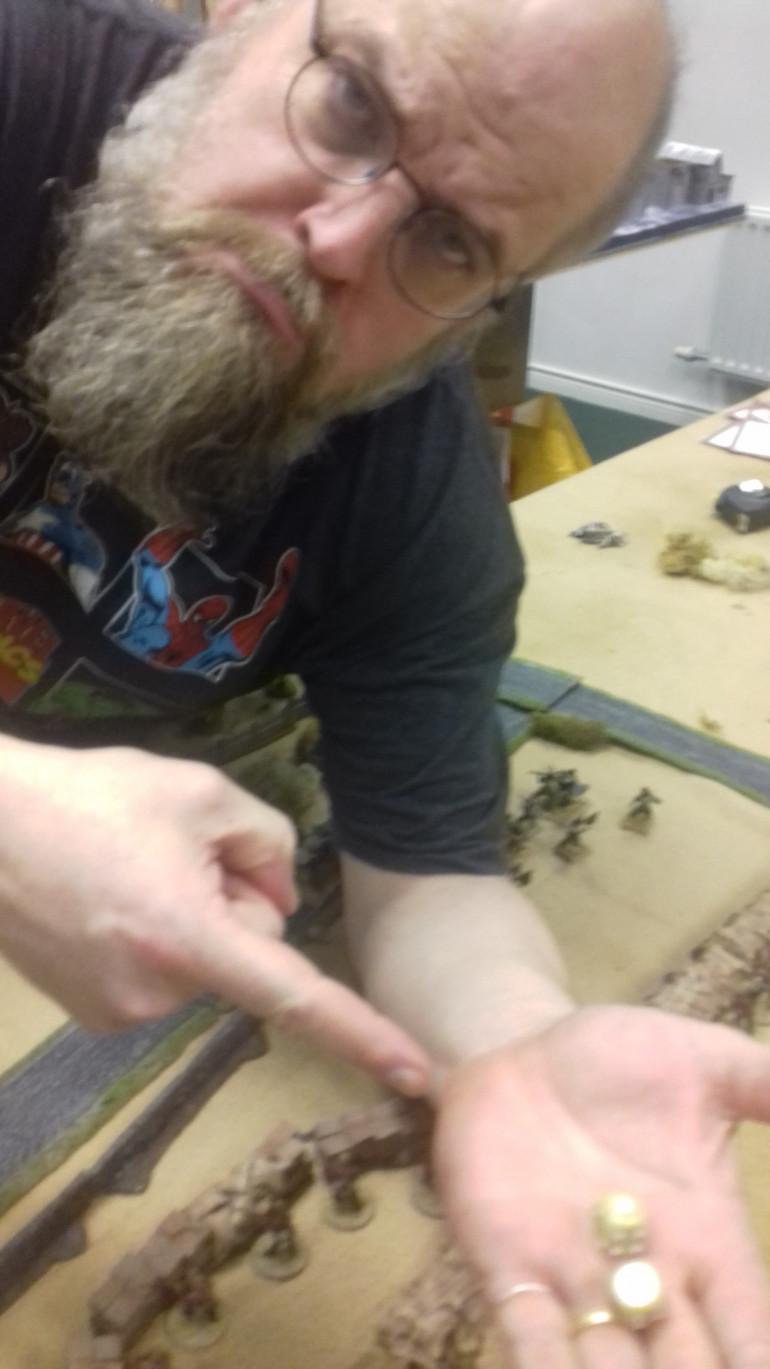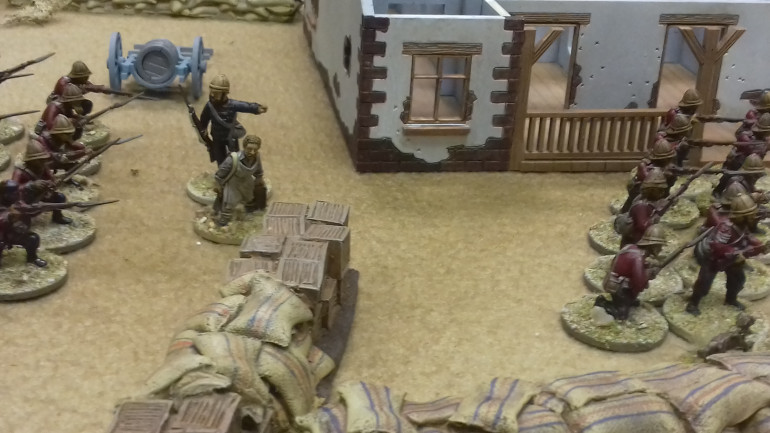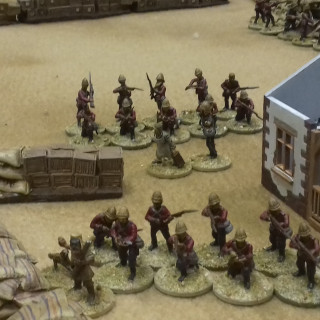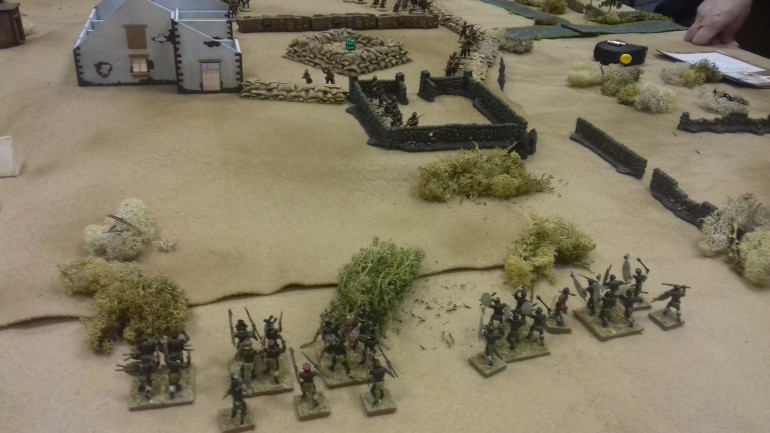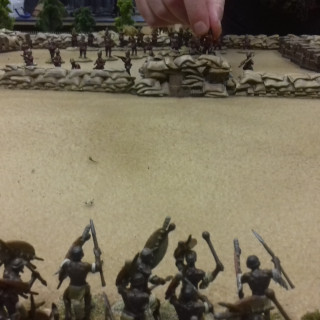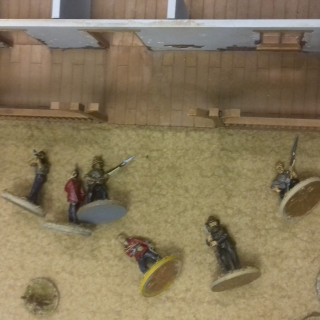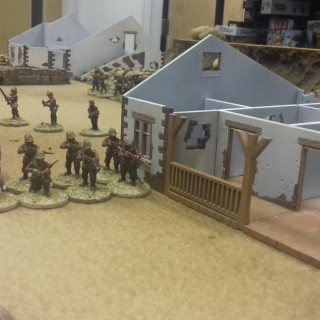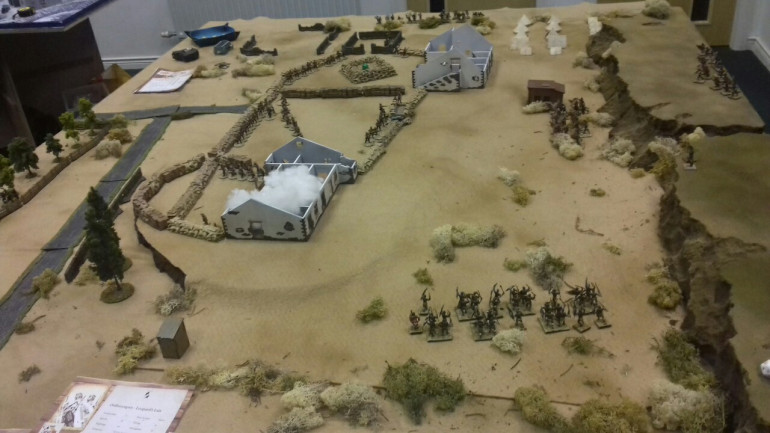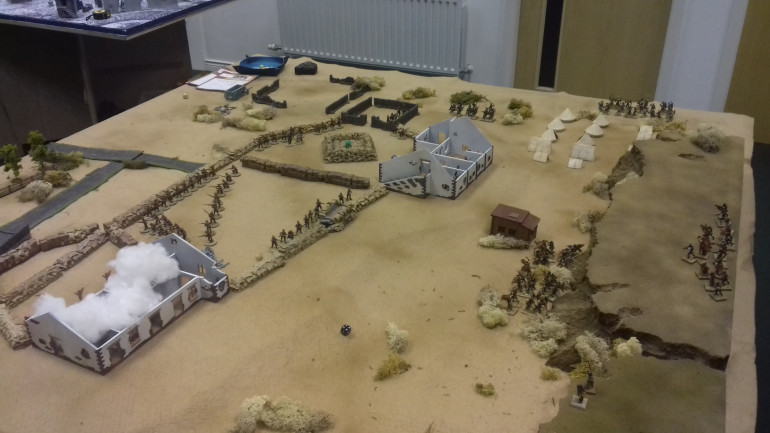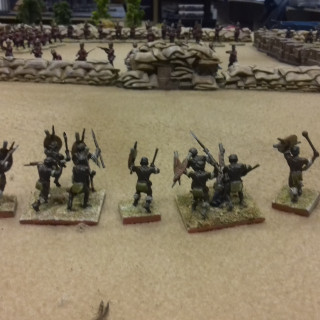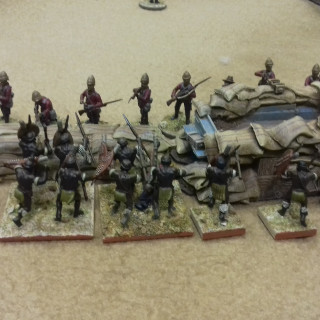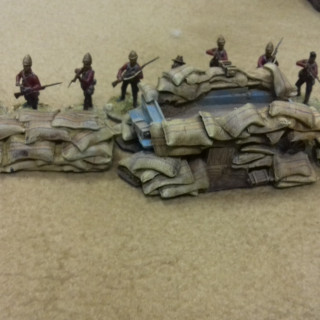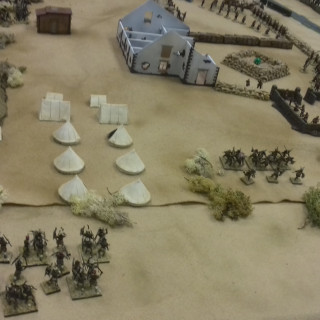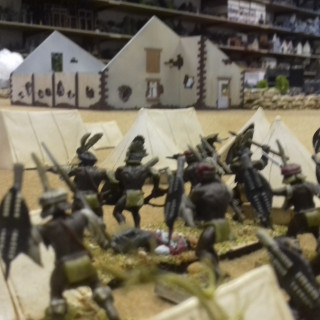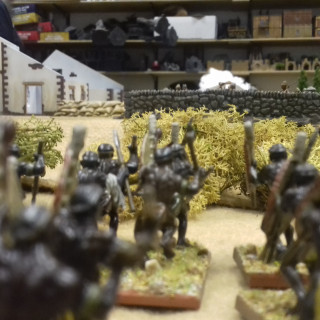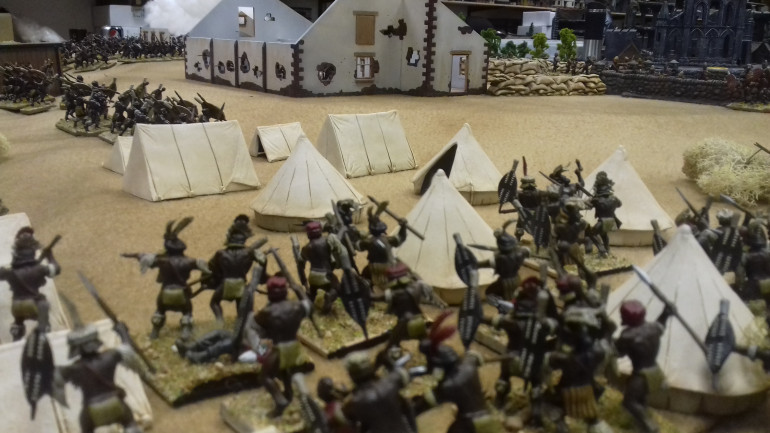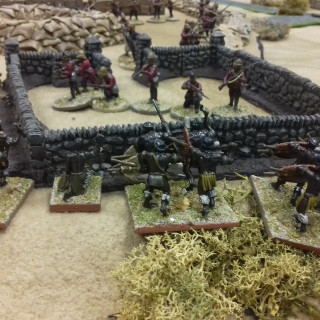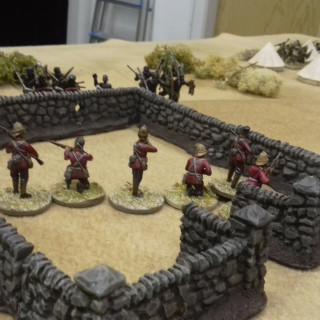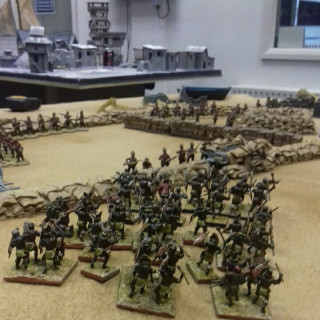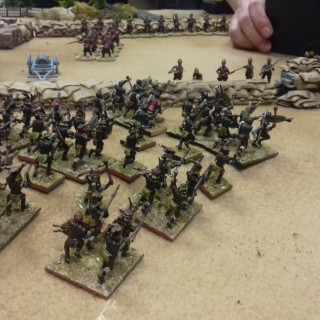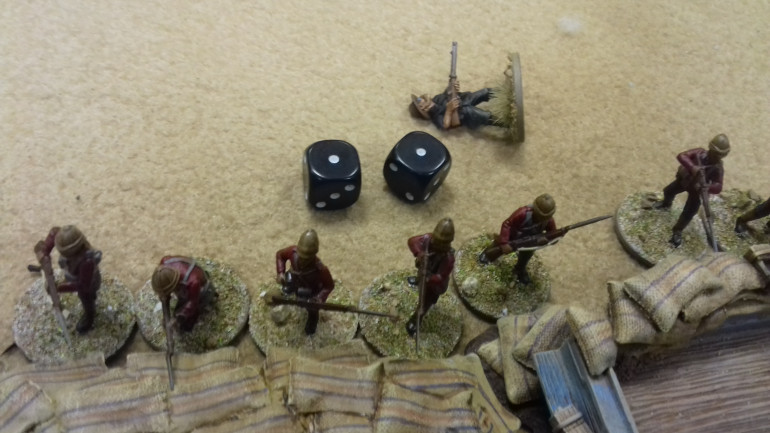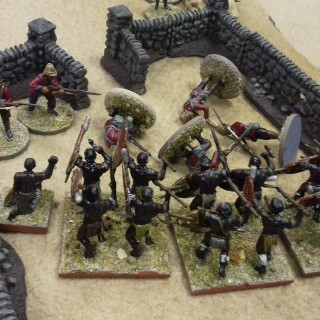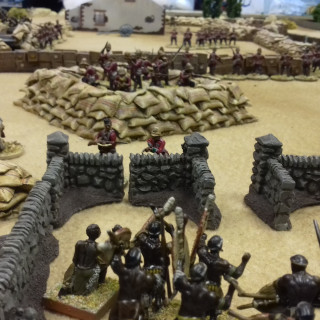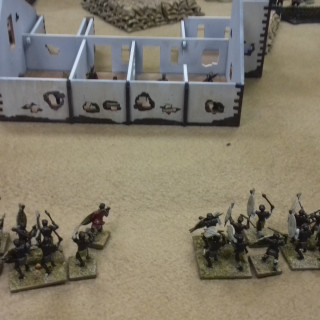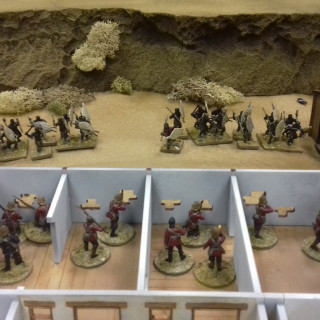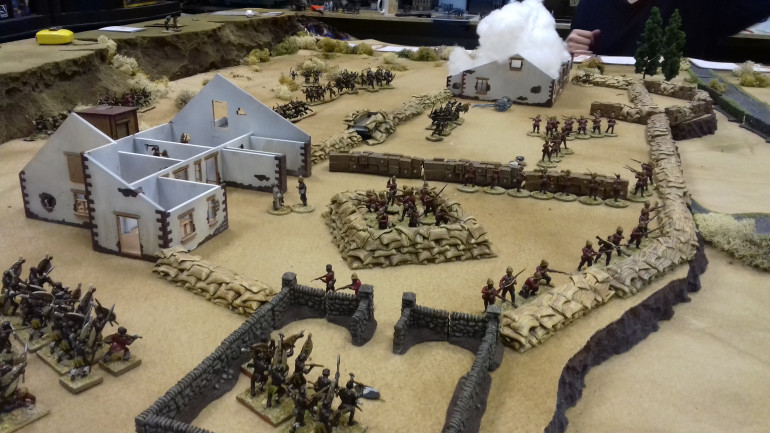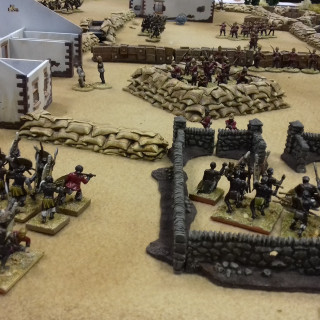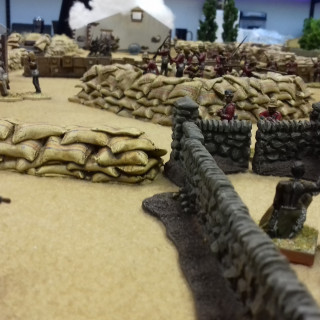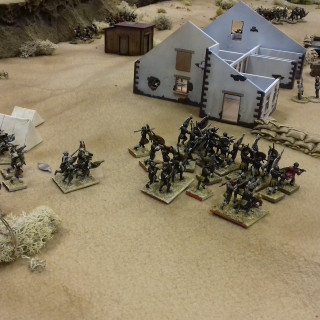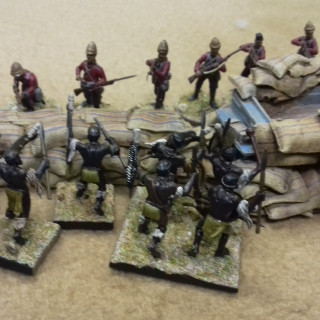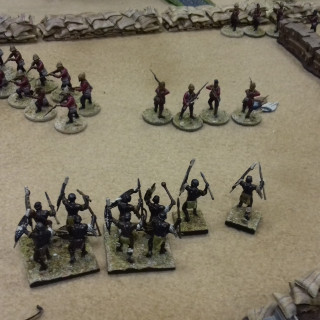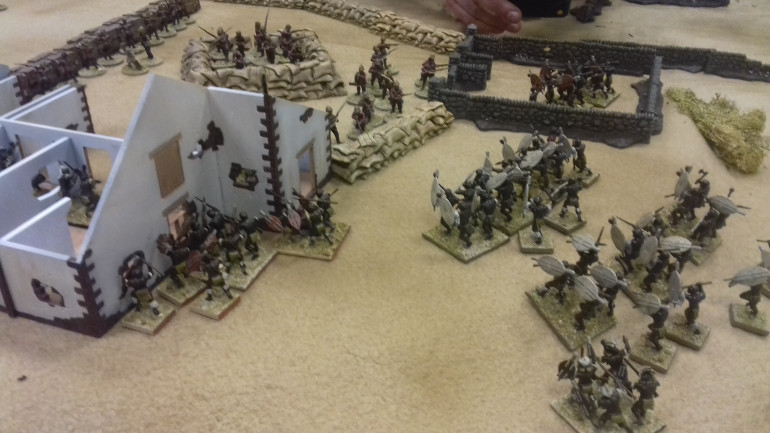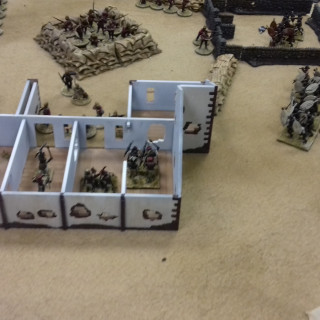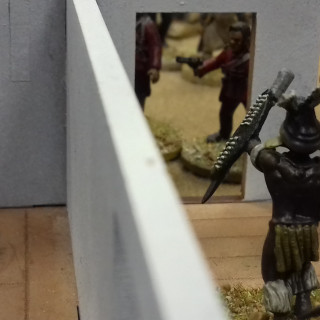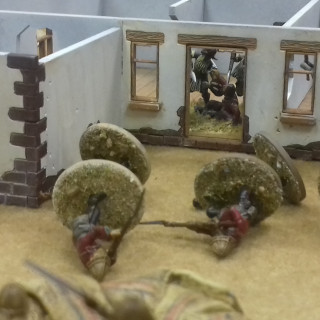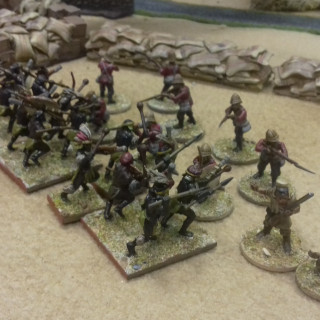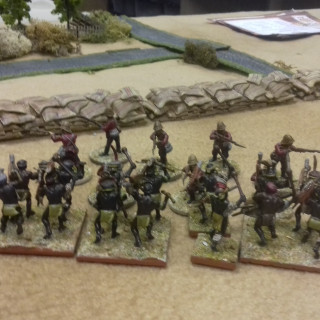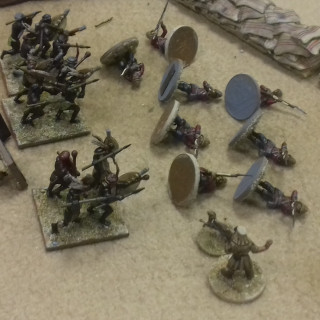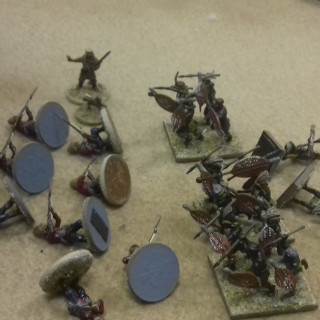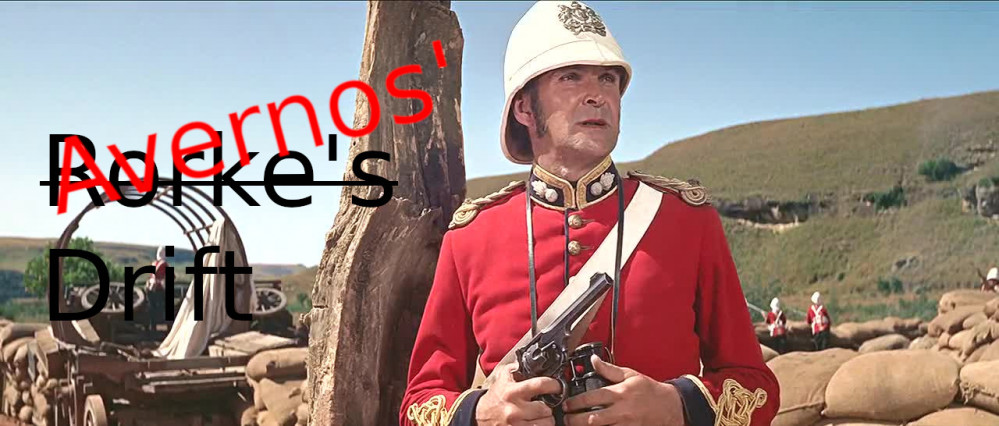
Avernos’ Rorke’s Drift
Recommendations: 603
About the Project
Men of Harlech stop your dreaming Can't you see their spear points gleaming See their warrior's pennants streaming To this battle field Men of Harlech stand ye steady It cannot be ever said ye For the battle were not ready Stand and never yield From the hills rebounding Let this war cry sounding Summon all at Cambria's call The mighty force surrounding Men of Harlech onto glory This shall ever be your story Keep these fighting words before ye Cambria (Welshmen never) will not yield
Related Game: The Men Who Would Be Kings
Related Company: Empress Miniatures
Related Genre: Historical
This Project is Completed
The Defence of Rorke's Drift
So it’s possible some people haven’t seen the film Zulu (shame on you) nevermind have read about the defense of the Mission Station of Rorke’s Drift 22-23 January 1879. To that end here is a, very, brief breakdown of the action and the reasons it happened.
In December 1878 an ultimatum was delivered to the Zulu king from the British neighbouring land of Natal. It required that the Zulus to disband their military and they had two weeks to comply. The reasons for this was due to the British idea to unite the south of africa and an independant Zulu kingdom on the borderlands prevented this. The Zulu nation itself was a military society, built like the Spartans, to disband their armies would be to abandon their way of life and so to continue their way of life they had to reject the ultimatum!
Chelmsford’s army was split into three columns and advanced into Zululand. It was slow going and a few minor skirmishes and the British superiority in training and technology lead to a dangerous mix of arrogant self-belief and contempt for their “savage opponents”. Having made slow going of only 11 miles in as many days this lead to Chelmsford taking the cavalry, nearly two thirds of the army, and advancing alone after what he believed to be the Zulu army of 20,000 men.
It was the morning of 22nd January.
The remaining third of the army, the supply wagons and infantry numbering approximately 1750 men, at the camp at Isandlwana was attacked at 8am by the main body of Cetshwayo’s force. Despite several opportunities to return and support the camp Chelmsford stuck to his plan in the belief he was pursuing the Zulu army. As such by 15:00 despite severe casualties the Zulus had defeated the British, less than 400 men survived the attack. The biggest defeat for a modern military against natives to date.
This then, is the set up for the attack on Rorke’s Drift. 4500 Zulus, who were part of the reserve force at Isandlwana crossed the river and attacked the British depot at the Drift. In many respect this was the worst thing they could have done. Attacking against orders, outside of the borders of Zululand, it gave the excuse for the repercussions and pursuit for the rest of the war. But that aside, what of the action itself.
The station at the Drift was an muntions dump and hospital, when news arrived via members of the ill fated expedition of the destruction of the force at Isandlwana that morning the decision was made to fortify and hold the camp, rather than attempt to flee with the patients in the hospital. Dalton is believed to be largely responsible for arguing this case to Bromhead and Chard.
Members of Durnford’s horse who arrived performed a small delaying action emptying the last of their ammunition into the oncoming Zulus before retreating towards Helpmekaar, seeing the retreating horsemen the untried 200 or so Natal Native Contingent fled, and This left 154 more inscribed on the rolls as defending Rorke’s Drift, included in this number are members of the Army Commissariat and Transport Department and Army Medical Department and Army Hospital Corps, along with the walking wounded in the hospital who aided the defense. This left roughly 130 fit regulars against over 30 times their numbers.
The buildings James Rorke had built for his trading post stood on top a small stone ledge, roughly 4-5 feet in height (120-150cm). The British defenders made a wall of mealie bags along this natural defensive line and connected it to the buildings, a stone cattle kraal (pen) and to the rear two wagons were used to reinforce the wall between the buildings.
Further to this Chard, the commanding officer, had a wall of tin and biscuit boxes built at the store house come church. This gave a secondary smaller defensive area to retreat to should it be warranted and inside this a final redoubt was built.
When the Zulus arrived and began their attacks it was roughly 16:30 and they came over the rear, encircled the defensive island the defenders had created attacking piecemeal from the south and west of the station. It wasn’t until the arrival of Prince Dabulamanzi kaMpande, the half brother of King Cetshwayo, that the attacks became more concerted. With black powder armed Zulus on the slopes of the Oskarberg ridge sniping at the defenders constantly harassing them from afar.
At some point Zulus managed to set the hospital alight, no definite time is given for this but we do know that the hospital had been evacuated between 18:00 and 19:00, and the men had fallen back to the smaller defensive position around the redoubt. So it must have occurred just prior to, or during the Zulu assault then.
The light cast by the burning hospital did help though for several assaults were launched overnight and repulsed the the glow of the blazing building.
By the dawn of the early morning nearly every defender had received some form of injury, first light on the morning 23nd January, 1879 brought the defenders a sight of utter devastation; hundreds of Zulu dead ringed the post, the air reeked of burnt flesh from the hospital – but the Zulus were gone. Although the defenders did not know it then, it was the return of the cavalry elements of Lord Chelmsford’s force that Zulu scouts having spotted in the distance lead to them retreating back across the Buffalo River.
Over 12 hours the defenders had repulsed countless probing attacks from a force many times their number of the one hundred and fifty, or so, of the defenders, fifteen had died outright, two others would died from their wounds, and sixteen others had been wounded. Roughly five hundred Zulus were killed.
Eleven of the defenders were awarded the Victoria Cross, and five others were nominated for the Distinguished Service Medal. A count ordered by Chard before the relief column reached them found that out of the 20,000 rounds of ammunition stored at the Drift before the defense, 900 rounds were left.
Designing the Drift
While the film Zulu does take some liberties with characters and details, it’s remarkably accurate for hitting the beats of the actual action, and this is what I wanted to recreate in a large participation game. Rather than aiming for complete historical accuracy the game should capture the feel of the movie. So to me that means at it’s core a siege with wave attacks and I set about finding a ruleset that could do that, which I can build on top of.
As luck would have it after a tireless search of literally some rulesets I came across The Men Who Would Be Kings (TMWWBK for short) by Daniel Mersey. This seemed to be exactly what I was after, a rules set for 30 – 120 figures per side in the colonial era. Let’s take a quick look at the set itself before I get into the set up for the scenario and how I recreated Rorke’s Drift.
TMWWBK uses a simple IGO – UGO system were players activate unit about giving them simple orders, running at the double, charging, firing and the like. However there are some variations, tribesmen can go to ground, while the regular troops can form close order ranks and volley fire. The units are activated by making an order check on 2d6 and adding any discipline and getting over their units leadership value. Leaders can however be taken out of action, in any round when the unit has taken a casualty roll 2d6 and on a double one the leader dies. Which gives good scope for having each unit of the defenders lead by one of the more prominent characters from the film and adds a bit danger to every clash.
The statline is very simple, speed, fight, fire, discipline are the only things with a number, and then equipment and special rules. For participation games where people may not only be unfamiliar with the rules but with wargaming in general less is most definitely more. Leadership for units is normally rolled randomly at the start of the game for each unit and recorded. So sometimes your lions really are lead by lambs, or in some cases drunkards. There are even optional traits for your overall general, such as being a complete cad and always retreating at full speed to save his own skin!
Combat and shooting is very simple, roll equal to or higher than the stat. A success is a casualty with no save. No modifiers are made to the result, instead the number of successes required to cause a casualty is increased. So if someone needs 5+ to hit, they will only ever need that, but aiming at a unit behind a wall at long range may mean you need four successes to kill one man. Another great little mechanic and handy for me as I can go ahead and tell people to count the successes and I can do the simple calculations to tell them how many to remove. No complicated tables thank you very much Mr Mersey.
So how did I adapt this to the table top. I’m going to break this down into three sections, scenario rules, British Forces and Zulu forces. The forces will be in the next posts, but for now I shall focus on the scenario itself.
Knowing that it is essentially a siege the first thing to sort out are the victory conditions for the game. Thankfully history helps us out here. The attack on the Drift lasted for twelve hours until the sign of the relief column of cavalry drove the Zulu off (or they gave up and saluted fellow braves if you want to stick with the film). So this gave me a turn limit, one turn per hour, twelve turns. At the end of the twelfth turn if the British had any unpinned units within the perimeter then they had held and the Zulus would melt off into the African veldt. On the other hand if the Zulus can overwhelm the defenders regardless of the hour, day or night, they win immediately.
So with win conditions and turn limit established it was time to look at the meat of the game. Alternate unit activation is great for a small number of friends playing together, but in a large participation game it can get dull, people aren’t engaged and sometimes arguments break out over who really deserves to go next. This was solved by my favourite gaming aid, as any bootcamp attendees may know, the humble deck of cards. By assigning a card to a unit and shuffling people have to pay attention as they don’t know what is coming next. In my original game I had six British platoons and five Zulus to represent the snipers on the ridge and the four ibutho present. This left me with a problem, two actually, the British now outnumbered the Zulus in activations and even though the Zulus had more men per unit they didn’t look like they were going to exactly swarm over the massively outnumbered defenders. While I didn’t want the defenders to be blown away by 30 times their numbers, I didn’t want to make it too easy to defend and still give the attackers some decisions to make. To this end I introduced two Zulu units per card. Now each of the four ibutho consisted of thirty two men instead of the paltry sixteen. However, the card could only be used to activate one of the units per turn, the exception being for movement if both units are close enough they can maneuver as one. This allows the Zulus to move a large wave up and force the defenders to chose who to shoot, knowing a unit may still be there at full strength. The final thing I added was a Joker to the Zulu deck. This did two things. Firstly it balances the number of activation cards for both sides and it is a bonus action. So a unit that has already acted could act again, or even use it to make both units in an ibutho act in the same turn.
The Zulu units can also be recycled by using their card to retire a unit or if it had been completely wiped out. The unit can be brought back on with an activation card. Potentially a unit wiped up could be immediately brought on with the Joker in the same turn to keep the pressure up, which is a nice touch I feel.
Deployment came next, the British is simple they deploy anywhere within the defensive perimeter with only two stipulations. No platoon can begin inside the final redoubt and Hook has to start with his platoon inside the hospital.
The Zulus are a little bit different. Once the british have been deployed the Oskarberg snipers can deploy anywhere on the ridgeline, they can’t move off that area either. But to account for the initial piecemeal attacks the ibutho units on the ground deploy randomly on a 1-3 up to 6” in anywhere along the short left hand table edge, and one a 4-6 up to 6” from the long northern table edge as far as where the road enters the table. This gives them roughly a five foot by 4 foot deployment area. Any recycled units also roll to see where they come on, so potentially two units on the same card could be separated if the player chooses to bring them back in straight away instead of waiting for both units to be off table. This lasts for the first three turns, from turn four onwards they can choose to deploy from any edge once the Prince has arrived and started giving the orders.
So there were a few things that I wanted to do to make it more like the film, and weirdly like the historical action.
There are no rules for buildings, and since the 4Ground terrain have rooms inside them I simply decided that a normal move was into an adjacent room, and an “at the double” action was two rooms. In the vein of keeping it simple.
The only other rule changed was to increase the successes needed to cause a casualty in hand to hand. The defenders bonus is normally one additional success to cause a wound. But in play testing it didn’t take long for the Zulus to deal heavy damage to the British, so two additional successes are needed when fighting across a defended obstacle. Which gives the defenders a bit of staying power.
To reflect that the action took place over twelves hours I’ve included four turns of “complete darkness” turns 6-9 inclusive have a reduced visibility for shooting unless within 18″ of the burning hospital, in which case they can be picked out as normal.
Speaking of burning hospitals this is the thing that has changed most often. Originally I had it go off at a set time. Then I had it randomly rolled for. Then I set it off but rolled randomly to see the spread of the fire. Finally I settle on this. On the third turn the three outer rooms closest to the left board edge fill with smoke, each turn thereafter the smoke progresses to the adjacent rooms. People have that turn to get get out, the turn after it fills the smoke becomes flames and anyone inside dies. No leader casualty rolls are needed as the models in the room are the ones who should suffer. By turn seven the last room is full of smoke and turn eight the building is merrily ablaze.
Lastly I added two pairs of individuals that I control to the defense. The cook and Commissary Dalton making the rounds with the ammo. They defenders get to choose where they start, after that they move clockwise 8″ a turn handing out ammunition and allowing one unit within 4″ to reroll shots that turn. In the base of several units being applicable the defenders have to choose which will receive the bonus before the cards are drawn.
In a more historic slant Pip the dog and Daniels the ferryman also join the defense. They start in the centre of the defenses and randomly move 2d6 at the beginning of each turn, I use a scatter die but various techniques to decide on the direction can be used. Daniels has a shotgun that he will use if necessary to defend himself and Pip. Meanwhile Pip was lauded as stopping several Zulu sneak attacks. Any Zulu units with the majority of the miniatures within 18″ of Pip count as having one less level of cover as he barks out warnings.
So that’s all for the scenario and rules, next up are the forces starting with the Zulus.
Zulus, two hundred and eight of them.
Now for a bit of research, not everyone’s cup of tea but an area of the hobby I adore.
Depending on your source numbers for the Zulus are given anywhere from 3000 – 4500 made up of the Undi corps that was the reserve at Isandlwana earlier that day. It comprised of approximately a thousand from each of four amabutho. They were the reserve because they were mostly older men between their thirties and fourties, with the average age of the uThulwana reportedly as high as the fifties, and a young ibutho of unmarried men.
After hitting the books I had the names and the shield colours of the four amabutho present.
- uThulwana ‘Dust Raisers’ White shields
- inDlondlo ‘Poisonous Snakes’ Red and White shield
- iNdluyengwe ‘Leopard’s Lair’ Black shield, with one white spot
- uDloko ‘Savage’ Red shield, with one white spot
Using this information I came up with the statlines for my four in game units, the snipers were drawn from iNdluyengwe so use the same statline with better weapons. One of the nice things about TMWWBKs is that there are two values used relating to activations, the Leadership value of the leader and the unit’s discipline. As I said earlier in a regular game you roll randomly for the Leadership stat, and if he becomes a casualty all units in the game default to a value of eight. This means a unit can have terrible discipline and a good leader and act until they lose him, at which point they’re more likely to disobey or run. Or have a terrible leader who is carried by the units discipline.
Since I want to recycle the Zulus I decided to give each ibutho set numbers it also allowed me to vary the units based on their experience. With the younger unmarried Zulu being the least disciplined and the married oldest having the best leadership and discipline.The unmarried iNdluyengwe I gave the fierce rule letting them hit on 4+ rather than the usual 5+. Each one is easily identifiable because of their shield colours, although they don’t precisely match so the red and white shields and red with white dot don’t get confused.
This gave me my original five units for version 1 of the game, I’ve subsequently added two more units. A second group of unmarried with slightly better discipline and a younger unit of unmarried with lower leadership. The shields for these are red and white unmarried and black and white married. It gives me the transition from Black being the lowest troop, through red, to white being the best. The more white the better 🙂
The Thin Red Line
The British are an easier task to research and sort out their statlines for the game. Any google search for colonial British troops will quickly give you the uniforms you need, the only variations required are the facings for the 24th Warwickshire Regiment of foot, in this case a green and the Royal Engineers, Chard only, have blue velvet.
For the units, everyone is lead by a Hollywood inspired character. Starting with Chard and Bromhead with the best leadership and going down to my Knaves Ardendorff and Hook. All the British have discipline +1 across the board.
After some playtesting I pushing Chard to having a Leadership of 4, which isn’t given in the game, but since the British have nowhere to run I felt keeping them firing until the end works well.
In the initial six unit game I also pushed the firing to 4+ for the British with the elite rule. With eight units and a force more able to fill all the gaps along the all I returned that to the regular 5+ This just left me with the special rules.
For every unit I wanted to give them a unique rule and bit of fluff from the movie. Zulu doesn’t have a couple of good quotes in it. The entire screenplay is practically quotable from start to finish. Daniel Mersey has included fun rules for the overall force commander, but I decided to take it further. I won’t list them all here, they’re on the PDF if you want a look, but to give you an idea of what I mean here are a couple of my favourites.
Corp Allen “Fire at the smoke” His unit removes one level of cover from the target unit. For those who haven’t seen the movie, he complains that he can’t see the Zulus to fire at them, and is told to have his men fire at the smoke to pin them down.
Pvt Hook “You’ve done your bit now out you get” is an interesting combo meal of a rule. Since he was defending the hospital with mostly walking wounded in the film, I decided to not allow the unit to ‘at the double’. But it gives Hook’s unit move action as a free action. So no dice rolling and more importantly no unfortunate fluff rolling when you’re attempting to evacuate a burning building!
Painting the tide Part 1
In a quick word about building the minis, I used the plastic sets from Warlord Games and scattered in some old Wargames Foundry Zulus in red coats for a splash of colour. Two things I did when building the units was to try and restrict the smaller shields to the unmarried units, the Zulus had started to move away from large shields with the arrival of black powder weapons. This gave the younger units a newer style small shield and the older married troops the larger one. There is no evidence that they were split in this way it’s purely an aesthetic choice and that’s all. The second thing I did was to clip off the end of the longer throwing spear, I wanted all the Zulu to have a short stabbing spear it also cuts down on breakages from the long haft in the box.
A long time ago the majority of the Zulus got a Black spray undercoat, a heavy drybrush over everything and then shield colours and spear heads picked out in metal. En masse they looked let’s be fair, okay ish. But up close they were pretty rough. Now I’m going back and adding some detail. I will hold my hands up right off the bat and say if you’ve read the previous entries that I didn’t follow the shield designs for the amabutho correctly. Trying to point out to someone that a red shield with a white spot is not the same as a red and white shield is too much hassle. So instead I have black, white, red and red and white. So let’s have a look at the generic paints used for all the minis.
I used mainly charred brown for skintone, with some dark fleshtone thrown in for more diversity.
Heavy Brown was used for all the spears, axes and the pole that holds the shield hides. Heavy Sienna I used for any rifles and the knobkierie (the heavy wooden mace with the ball head)
For the rear of the shields I used Buff, this was also used for any black and white furs on loincloths and the top of the shields. The Kakhi is used on any animal skins, loin cloths and Goldbrown for furs. I mostly just mixed and matched these three colours where I felt like it to break up the uniformity of the figures.
shield colours mainly, although ivory is used with the unmarried a lot more. Black also is used for headbands and detailing.
Painting the tide Part 2
So if you’re not a Zulu aficionado you may have the same issue that the guys ran into unboxing them a long time ago, what’s the difference between married and unmarried. Well the simple answer is that the more restrained sober Zulus are going to be married, while the term peacocking could almost have been made for unmarried regiments, festooned with grass, feathers and furs. As an additional note, the Zulu shields started to reduce in size with the arrival of black powder weapons on the continent. So as a purely aesthetic choice I’ve used mainly small shields for the younger/newer formed unmarried ibutho and the married amabutho all get the larger shield. No actual evidence of that happening, but it helps give a cohesive look.
if you look into the headdresses of the Zulu to see what birds commonly made them up (yes I am that sad, shut up), then you’ll find that in the main they are ostrich, lourie, blue crane, sakabula. There are more but I don’t want to end up with a pallet of dozens of colours for feathers alone. Some colours were worn by royalty or heroes only, also some amabutho had specific ways to make up their headdresses. I’m sticking to these three colours with black to mix and match different combinations on pure whim alone. Osprey’s ‘The Zulus’ by Knight and McBride has more imformation though if you’re keen.
I also use Ivory for the grass chest pieces, and the bands on their arms and calves. Add to this the fur colours from the previous entries and you can get a unique looking unit while still having some uniformity.
Unmarried men are simply painted in the aforementioned colours with a simple black head roll and as you can see below how a couple of the original stands look compared to the freshly touched up and dipped stands. I’ve used Army Painters Darktone for the Zulus. I’ve not gone into the colours for the british jackets as that will be covered in the next update.
eagle eyed viewers may notice that the metallics aren’t done yet, they won’t be until everything is based and matt coated to take the sheen off. Then I’ll fill those in.
As a final point if you have animal hides to paint I’ve been using a sponge to get a natural random look without taking an age to do. I would definitely suggest this to anyone painting anything, up to and including horses. Food for thought.
Thin Red Line
Painting the British troops is relatively straight forward the only real issue being in the detailing of the uniforms. Once again these were quick paint jobs with minimal work that I’m now going back to complete. Some colours can be varied and because my plan is to use an Army Painter Strong Tone dip I’ve taken that into account with some colours also.
on the left we have a line rifleman and on the right we see an officer. The jacket is red and the trousers blue velvet with the unit facings in green on the collar and cuffs. Things to note are in the details though. The officers collar facing is around the whole collar while the ordinary rifleman is only at the front of the collar. Also the piping on the jackets is different as you can see below. I prefer to avoid using straight white as it’s too stark even when dipped it looks odd to the eye.
Helmet and equipment. The tropical pith helmet was issued in white as was the bread bag and webbing. These were stained down by the men on campaign using tea and coffee, to make them less stark. If you want you can leave them white in which case ivory. I decided to use the buff for the helm and let the dip stain it darker. If you wanted to you can also use Buff for the webbing, but I wanted the webbing in a white colour although initially I’ve painted them grey and will apply the wash then highlight with a white afterwards to leave some shading. This is just for the Hollywood look of the game.
Loose ammo pouch, bayonet sheath are black, while the canteen body is best painted in a light brown, for which I’m using heavy brown.
before and after a dip.
next up is basing, I’ve decided to scrap my usual method of sanding, painting and then applying flocks and grasses. I’ve a lot to do and time is of the essence, so to this end I’ve mixed up two types of sand, some small ballast and stones, a green flock and an autumnal static grass. I mixed the sand I needed and then started adding the flock and grasses and stirring with a finger until I reached a consistency that looked right to my eye. Then I pva’ed it down to some test models. I can go back and add larger dried tufts and turf blend if time permits.
22–23 January 1879, Rorke's Drift Rules 1
Before getting into the rules, I’d just like to take a moment to talk about what these rules have been written for. This game is primarily my version of Rorke’s Drift a blend of the film Zulu and the historic action that is intended to be played by multiple players at Conventions and the like.
As such there may be things that skew gameplay in one way or another to achieve specific effects, it is also written to be played with The Men Who Would Be Kings on an 8×6 board.
If either of these things isn’t what you’re looking for then change them, it is after all only a game.
Forces.
The British forces are easy to field,each unit is a standard regular colonial force lead by one of the heroes of Rorke’s Drift, my initial game was written for 6 British units, now I have 8 units for larger games with some stat changes, copies of each are included in the files at the end of this post.
The Zulu impis are a little more complicated, but only a little. The most important thing is that you will want to field 1 “regiment” less than the number of British units. I use the word regiment because with one exception each regiment is two standard tribal infantry units, the exception being the snipers on the Oskerberg ridge.
Activation.
Each unit (or regiment for the Zulu) has an assigned card these are shuffled and drawn randomly. When a card is drawn the corresponding unit activates as per the normal rules from TMWWBK. After the activation is complete a new card is drawn and this continues until all cards have been played. This constitutes a game turn after which all cards are shuffled together and the procedure is repeated.
Playing Cards on Zulu Regiments works slightly differently. The snipers play out as normal, but every other regiment has one card for two units. This gives Zulu players weight of numbers but also reflects the piecemeal attacks and somewhat disorganised assaults.
However, we don’t want to turn this into a shooting exercise for the British so to balance this if both units from the same regiment start with models within 4″ of each other they may make a group Move or At the Double action with both units activating on a single card. Note the units do not need to end within 4″ of each other only begin the activation within range.
The Joker is a special card that can be played on any Zulu regiment. It counts as being the regiments activation card. This allows them to take a second Action of any kind that it is normally allowed. Including the new Recycling Action.
Recycling
The Zulu Impis didn’t attack all at once, but their numbers were such that they were able to keep a sustained assault throughout the twelve hours. To represent this a regiment can use a card (theirs or the Joker) to recycle units.
Cards are played in one of two ways. A single unit on the table can be removed regardless of its current status or position.
A Full unit that is off table can be returned to the tabletop from either a board edge or from behind a Screening Unit (below). If both units from a single regiment are off table they both may be deployed as a group. Deploying from a board edge allows the unit, or regiment, to take a Move Action (not At the Double) moving up to their maximum allowed speed.
If deployed behind a Screening Unit they are placed 6″ to the rear of the unit placing models so they do not project beyond the footprint of the Screening Unit and this counts as their full Action for the card.
Regiments deployed in this way must remain in cohesion but otherwise, you may place them any way you see fit.
Screening Units
Any unpinned unit that consists of at least 50% of their starting models within 6″ of a British unit may be used to screen the deployment of recycled Zulu units and regiments.
The Screening Unit may not have British Units to their “rear” to check this draw an imaginary line across the front of the unit as long as all the British units are in front of this line recycled units may be deployed to the rear.
Line of Sight is not a factor, however, so if other British units are in a position to target the newly deployed Zulus they may still be deployed.
Removing Cards from the deck.
If a British unit is destroyed their card is discarded after it is drawn and a new card is played instead. If using the optional rule (pg38) Taking Command of Leaderless Troops the lower the card for the absorbed unit is discarded. Because the British regular army was tightly structured you may want to allow any units to mob up even if their leader is still alive, in which case the lowest ranking officer’s card and activation card are placed to one side. If that unit suffers a Leader casualty subsequently then those cards are swapped rather than leaving the unit Leaderless, as the lower rank once more steps up to take control.
22–23 January 1879, Rorke's Drift Rules 2
Here are a set of additional rules to add to TMWWBK to help reflect some of the events that occurred during the action and to aid in gameplay. Again these are based on my set up so it may be necessary to amend some of these for your own setup.
All events take place at the end of the turn with any in-game effect being applied from the start of the next turn.
Initial Deployment
For the British the units may be deployed anywhere within the perimeter the only stipulation being Pvt Hook’s unit must be placed in the hospital.
Zulu units, the Snipers must likewise be placed on the Oskerberg ridge and may not come off this. If table size is an issue assume the ridge is off table and use a point on the table edge to measure ranges to while keeping track of casualties on the unit.
The Regiments are deployed randomly within the green area up to 6″ on, roll a d6 to see where they deploy 1-3 short board edge, 4-6 the Garden. Any units recycling will also randomly deploy to these areas, roll for each unit individually unless deploying a regiment.
From 18:00 onwards any point along any board edge may be used for deployment, or the base of the Oskerberg Ridge if represented, as Prince Dabulamanzi kaMpande arrives to take control.
Terrain
Mealie Bags and Biscuit Boxes; these are treated as obstacles and hard cover.
Abandoned Camp and the Garden; these are treated as soft cover
Buildings; these are treated as obstacles and hard cover.
Rooms may hold as many miniatures as will fit without overlapping bases.
Movement within the buildings is not measured in inches, instead, a Move action allows a model to move one room and At the Double to move two rooms.
British Units may not form Close Order within the buildings.
Final Redoubt; this is treated as an obstacle and hard cover.
The Redoubt may only be occupied by a single unit (do not worry about overlapping bases if necessary to fit the unit)
While inside the Redoubt the unit counts as being in close order with a 360° line of sight until reduced below 6 models.
Hospital Fire; the fire starts in the most south-westerly room at the end of each turn the fire spreads to any adjacent rooms, this will continue until the building is ablaze, the veranda does not count as a room.
Any models, British or Zulu, occupying a room that becomes engulfed in flames are immediately removed from play, no test for pinning is required for casualties inflicted in this way.
Light from the blaze illuminates the battlefield during the night, any unit with a model within 12″ of a burning room of the hospital may be targeted as normal.
Night Fighting; Sunset came at around 19:30 on the evening of the 22nd and when full darkness descends visibility is limited to 6″ unless illuminated by the hospital fire.
So that is just about it all that’s left to say is that if anything doesn’t work for you change it, no game belongs to the author once they publish it.
If the gunfire from the British lines proves too devastating you can declare that any Zulu more than 8″ from the British Perimeter counts as one level of cover higher than they should due to the long grass.
As far as victory conditions go I keep things very simple, if there are any unpinned British units left at 04:00 then it is a British victory as Chelmsford’s column arrives, albeit perhaps a pyrrhic one.
If the Zulu Impis wash their spears then they have completed their goal and return to Zululand as the victors.
On the reverse of the Quick Reference Sheet I have a Timeline of what was roughly happening during the actual defence of the Drift hour by hour.
These are to be read aloud to the players, rather than twelve turns I think the twelve hours help to give people more clarity on the context of what happened and how their game may be altering from the precedent set by history.
The bold text is an Aide-mémoire for in-game effects and should also be read out so players on both sides know what is happening or about to happen so they can plan to make best use of the information.
16:00
Here is the photo montage of the 2019 game between Lt Gerry Bromhead defending the Drift against the Impis of Prince Big Ben kaMpande.
the Initial Disposition of the forces and first thrusts towards the hospital and northern perimeter wall
17:00
the uThulwana ‘Dust Raisers’ charge towards the northern wall from the garden but heavy sustained fire from the 24th repulse them.
Meanwhile the unmarried men of iNdluyengwe ‘Leopard’s Lair’ impi attack the walls of the hospital where Pvt Hook’s men manage to stave off the assault.
19:00
first tentative probes on the kraal by iNdluyengwe ‘Leopard’s Lair’
20:00
despite killing a lot of the hospital defenders Gerry fluked something
21:00
charging the lines, good idea
getting beaten to death, bad idea
23:00
Zulus push the defenders out of the kraal as the noose tightens










































